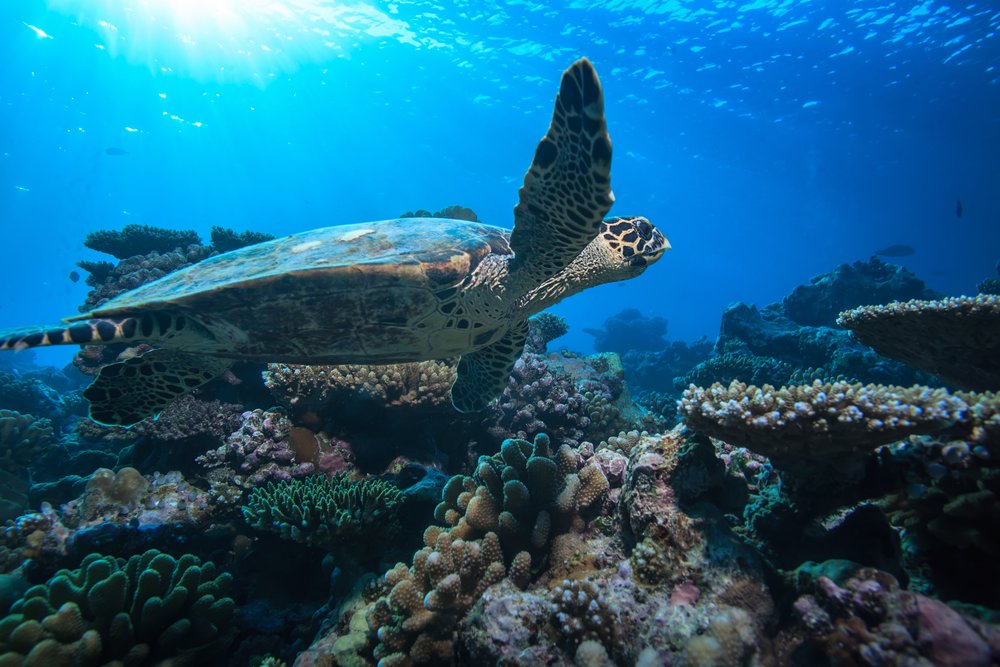Sea Turtle Nesting Season: 5 Fun Facts

Have you been told to keep the lights out during nights at the beach? If you live in Florida—where 90 percent of US sea turtle nesting occurs—it’s actually for very good reason! We’re in the midst of sea turtle nesting season, and the presence lights and other distractions could prevent hatchlings from making their journey from sand to sea.
Read on to learn more about this fascinating journey and other unique sea turtle facts.
Sea turtles are born travelers
From the moment they are born, sea turtles start traveling great distances—and they just don’t stop! Hatchlings will swim through the water for anywhere between 24 and 36 straight hours, until they reach the open sea and then navigate their way from there. During adulthood, turtles may travel hundreds or thousands of miles to get from nesting to feeding sites. It is suggested that turtles make use of the Earth’s magnetic field in their navigation, which would allow them to maintain their sense of direction and even find (or return to) specific spots.
They play a key role in the ocean ecosystem
Sea turtles aren’t just magnificent to observe—they play a key role in the ocean ecosystem, too. They feed on sea grass—and are some of the very few animals that do. Sea grass needs to be maintained in this way in order to serve as a home for several different species, many which humans rely on.
They lay lots of eggs
While many of us are familiar with sea turtle nesting season in at least some regard, just how many eggs are laid is simply staggering. A 20-mile stretch of Florida shorelines can serve as the nesting site for more than 150,000 pounds of eggs!
Young sea turtles—hatchlings—use natural cues to go home
Why is it so important to keep away the bright lights on the beach? As we mentioned earlier, the hatchlings head to the brightest spot when it’s time for them to go into the ocean—and naturally, that should be the moonlight over the water. The mother turtles also use this light to head back into the water after laying the eggs.
You can help keep them safe
There is a variety of helpful things you can do to keep sea turtle mothers and hatchlings safe. One of the easiest is, of course, to let the beach remain dark at night by keeping away artificial sources of light. You can also pick up trash on the beach to ensure that sea turtles can navigate safely on the shore.
Whether you quietly observe or reach out and help, sea turtle nesting season is a great time to think about sea turtles, some of the gentlest giants of the ocean.
Bookmark & Share
User Comments
Be the first to comment on this post below!
Previous Article















